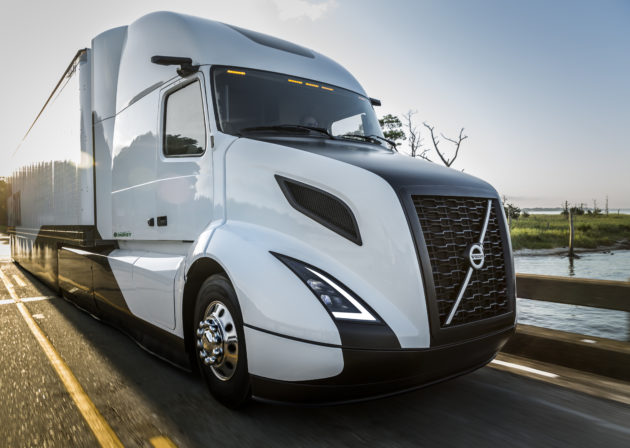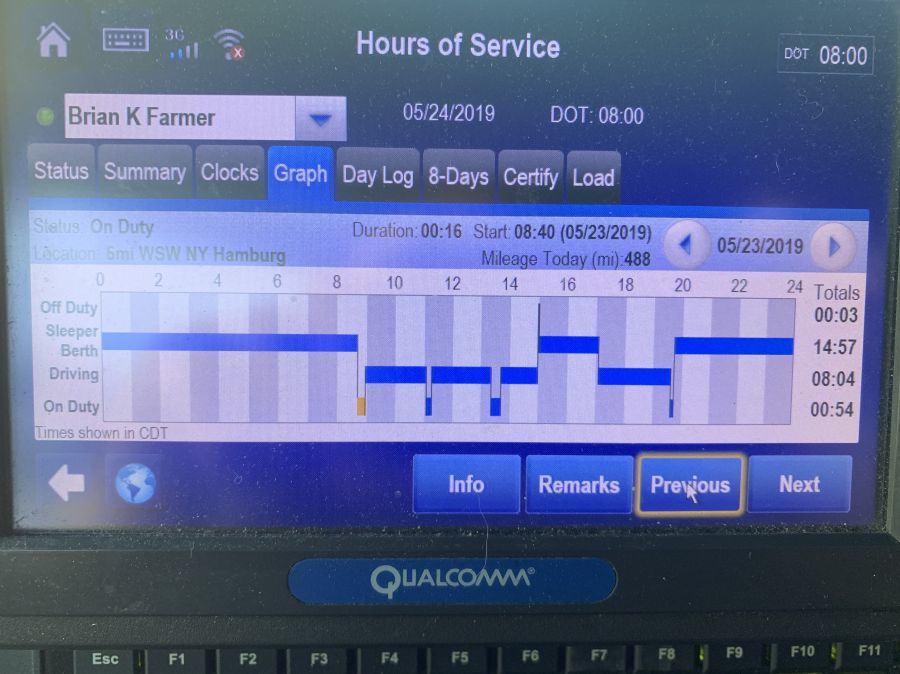My Understanding Of The Split Sleeper Berth Rule
Topic 25668 | Page 2
I understand it well and all if you are confusing me lol. Its very simple. ANY 8 hour sleeper berth will pause or stop that 14 hour clock and at the end of that 8 hours in the sleeper, you'll have exactly what you had at the point you went into the sleeper.
You don't have to use the 8 hour period in conjunction with an 8/2 split.
If you do choose to do a split, do your 8 in the sleeper then get up and start driving. Before that drive time is up, take a 2 hour break. That can be either in the sleeper or off duty. At that point you'll have the equivalent of a 10 hour break (11/14 hour clock) MINUS whatever time you drove between the END of the 8 hour sleeper and the 2 hour break.
Its very simple and your e-logs will do the hours available calculations for you.
I highly recommend that anyone who doesn't understand it, to go through the high road hos section. I also recommend trying it a couple times so you can better understand how it works.
Sleeper Berth:
The portion of the tractor behind the seats which acts as the "living space" for the driver. It generally contains a bed (or bunk beds), cabinets, lights, temperature control knobs, and 12 volt plugs for power.
HOS:
Hours Of Service
HOS refers to the logbook hours of service regulations.OOS:
When a violation by either a driver or company is confirmed, an out-of-service order removes either the driver or the vehicle from the roadway until the violation is corrected.

Pretty good way to sum it up, Susan.
Thank you Mark. Whenever I have a trainee, I always have them do 1 or 2 8/2 splits so they can see how it works and understand situations where it may be helpful to them. I also have them run on recaps at least once so they can understand how to determine what hours they have coming back and when.
I understand it well and all if you are confusing me lol. Its very simple. ANY 8 hour sleeper berth will pause or stop that 14 hour clock and at the end of that 8 hours in the sleeper, you'll have exactly what you had at the point you went into the sleeper.
You don't have to use the 8 hour period in conjunction with an 8/2 split.
If you do choose to do a split, do your 8 in the sleeper then get up and start driving. Before that drive time is up, take a 2 hour break. That can be either in the sleeper or off duty. At that point you'll have the equivalent of a 10 hour break (11/14 hour clock) MINUS whatever time you drove between the END of the 8 hour sleeper and the 2 hour break.
Its very simple and your e-logs will do the hours available calculations for you.
I highly recommend that anyone who doesn't understand it, to go through the high road hos section. I also recommend trying it a couple times so you can better understand how it works.
ThT is what I did. Maybe I didn’t explain it well
Sleeper Berth:
The portion of the tractor behind the seats which acts as the "living space" for the driver. It generally contains a bed (or bunk beds), cabinets, lights, temperature control knobs, and 12 volt plugs for power.
HOS:
Hours Of Service
HOS refers to the logbook hours of service regulations.OOS:
When a violation by either a driver or company is confirmed, an out-of-service order removes either the driver or the vehicle from the roadway until the violation is corrected.
Good for you Grumpy!
I was dog tired when I read your post. I thought you meant you were expecting to have a full eleven/fourteen after your 2 hour nap. I clearly misread your statement.
I'm glad you experimented with it. There's times that rule is really helpful.
Most understand doing an 8 first but not a 2 hour first.... so here it goes.
If you take the 2 hour break first, add 22 to the time you get off the first break.
Example... you take a 2 hour break from 2200 to midnight, you add 22. Your 14 clock will end at 2200 that evening.
If you take the 8 sleeper first, add 14 to the end of that break.
Example... You are in sleeper from 1600 to midnight. Add 14 to the end of that break and your 14 will end at 1400.
As for drive time, 11hours minus the hours you drive between the two breaks is what you have available after the 2nd break.
You will not get a full clock after an 8/2 split.
Good for you Grumpy!
I was dog tired when I read your post. I thought you meant you were expecting to have a full eleven/fourteen after your 2 hour nap. I clearly misread your statement.
I'm glad you experimented with it. There's times that rule is really helpful.
No problem.
I thought I was going to need to use it again today, but I was able to creep around the building in sleeper berth to get to a door to unload. So in 7 minutes, I’ll log my pretrip that I did this morning, and go on the clock so I get paid. Being hourly, I work differently than mileage guys. If I were paid mileage I would remain in sleeper berth until I unloaded, and start with a fresh clock.
Sleeper Berth:
The portion of the tractor behind the seats which acts as the "living space" for the driver. It generally contains a bed (or bunk beds), cabinets, lights, temperature control knobs, and 12 volt plugs for power.
I understand it well and all if you are confusing me lol. Its very simple. ANY 8 hour sleeper berth will pause or stop that 14 hour clock and at the end of that 8 hours in the sleeper, you'll have exactly what you had at the point you went into the sleeper.
This part is still confusing me though. I stopped last night with only a couple hours left on my drive time.
Here is my graph from yesterday.

This is my hours available this morning after 8 hrs in sleeper berth. I thought I took a picture of the graph but apparently I took two of the summary.

It looks like I was driving and on duty for a total of 9 hours. So if I got the remainder of yesterday’s 14 shouldn’t I have only gotten 5 hours back?
Sleeper Berth:
The portion of the tractor behind the seats which acts as the "living space" for the driver. It generally contains a bed (or bunk beds), cabinets, lights, temperature control knobs, and 12 volt plugs for power.
My clock from 5/22 in case it matters.
I was working on home time, in case you are wondering why the odd pattern.
I went in and dropped and hooked in the morning so I was sure to have a trailer to leave that night.

New Reply:
New! Check out our help videos for a better understanding of our forum features

















Preview:
This topic has the following tags:
Logbook Questions Split Sleeper Berth Rule







 TT On Facebook
TT On Facebook
I’m confused, because it seemed to work as I expected. I ended up with time to get where I needed to be in any case.
Sleeper Berth:
The portion of the tractor behind the seats which acts as the "living space" for the driver. It generally contains a bed (or bunk beds), cabinets, lights, temperature control knobs, and 12 volt plugs for power.